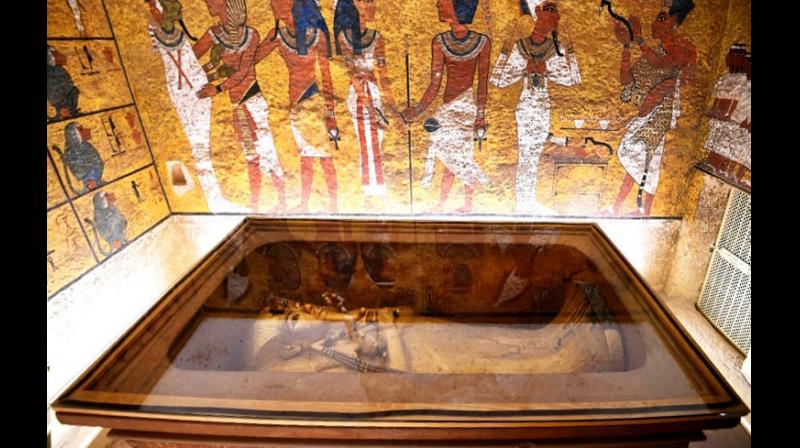Unveiling the golden past
Conservationists finally reveal the restoration work done on Tutankhamun's grave.

Luxor: After almost a decade, a team of international experts on Thursday revealed the results of their painstaking work to preserve the tomb of Egypt's legendary Pharaoh Tutankhamun. Nearly a victim of his own fame, long years of mass tourism had left their mark on the boy king's burial place near Luxor on the east bank of the Nile River.
"A hundred years of visits, after being sealed for 3,000 years... can you imagine the impact on the grave?" said Neville Agnew, head of the project led by the Los Angeles-based Getty Conservation Institute.
"Visitors, humidity, dust..." lamented the scientist during the unveiling ceremony at the tomb, discovered in 1922 by British archaeologist Howard Carter in the Valley of the Kings.
Called to the rescue in 2009, Agnew has led a 25-member team that included archaeologists, architects, engineers and microbiologists, to preserve the tomb and fend off the ravages of time and tourism. Interrupted during Egypt's 2011 uprising and the political instability that followed, the project later resumed its work and finished up this month.
The preservation work began with a comprehensive study of the funeral chamber, including its ornate golden-yellow murals, which had been blanketed over the decades by a grey veil of dust. Lori Wong, a curator specialising in murals, specifically looked into the "material composition of the paintings and how it was applied". The goal in doing so was "to understand the current state of the paintings, to determine if they were in danger and to establish a plan to safeguard them for the future", she told AFP.
 Many years of mass tourism had left their mark on the boy king's burial place near Luxor on the east bank of the Nile River. (Photo: AFP)
Many years of mass tourism had left their mark on the boy king's burial place near Luxor on the east bank of the Nile River. (Photo: AFP)
Famed Egyptian archaeologist and former antiquities minister Zahi Hawass, who initiated the project, said that the project has "saved the tomb of Tutankhamun". "Still I really think after this great work that has been done, we need to limit the number of tourists who enter inside," he added.
"If we let mass tourism enter this tomb, it will not last more than 500 years," he warned, advocating for a complete halt of visits to site. He said that the tourists could instead visit a replica built nearby. "We have to think of the future from now. In 500 or 1000 years if we leave the tourist situation like this, the tombs of the Valley of the Kings will be completely finished," he concluded.

